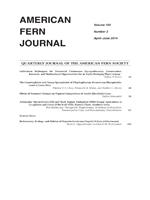Clubmosses (Lycopodiaceae) represent the closest living counterparts to early vascular plants, but inability to culture terrestrial taxa has made much of the clade inaccessible to ex-situ conservation, experimental research, and horticulture. In an attempt to identify conditions conducive to repeatable ex vitro culture, the utility of clayey and sandy loams amended with pumice as a medium was observed for 20 terrestrial species spanning all three subfamilies of Lycopodiaceae. Using this media class, a series of effective sporophyte cultivation and propagation techniques were developed for all 9 North American genera. Strategies are described for selection of appropriate propagules, establishment, propagation, and long-term maintenance for each genus. Sporophytes of all taxa established readily in oligotrophic, largely inorganic media under high humidity. Large clonal colonies were maintained with frequent application of weak fertilizer solution under bright light, high humidity, and year-round moderate temperatures in two greenhouses, a growth chamber, and laboratory.
How to translate text using browser tools
1 April 2014
Cultivation Techniques for Terrestrial Clubmosses (Lycopodiaceae): Conservation, Research, and Horticultural Opportunities for an Early-Diverging Plant Lineage
Jeffrey P. Benca
ACCESS THE FULL ARTICLE

American Fern Journal
Vol. 104 • No. 2
April 2014
Vol. 104 • No. 2
April 2014
Lycopodium




